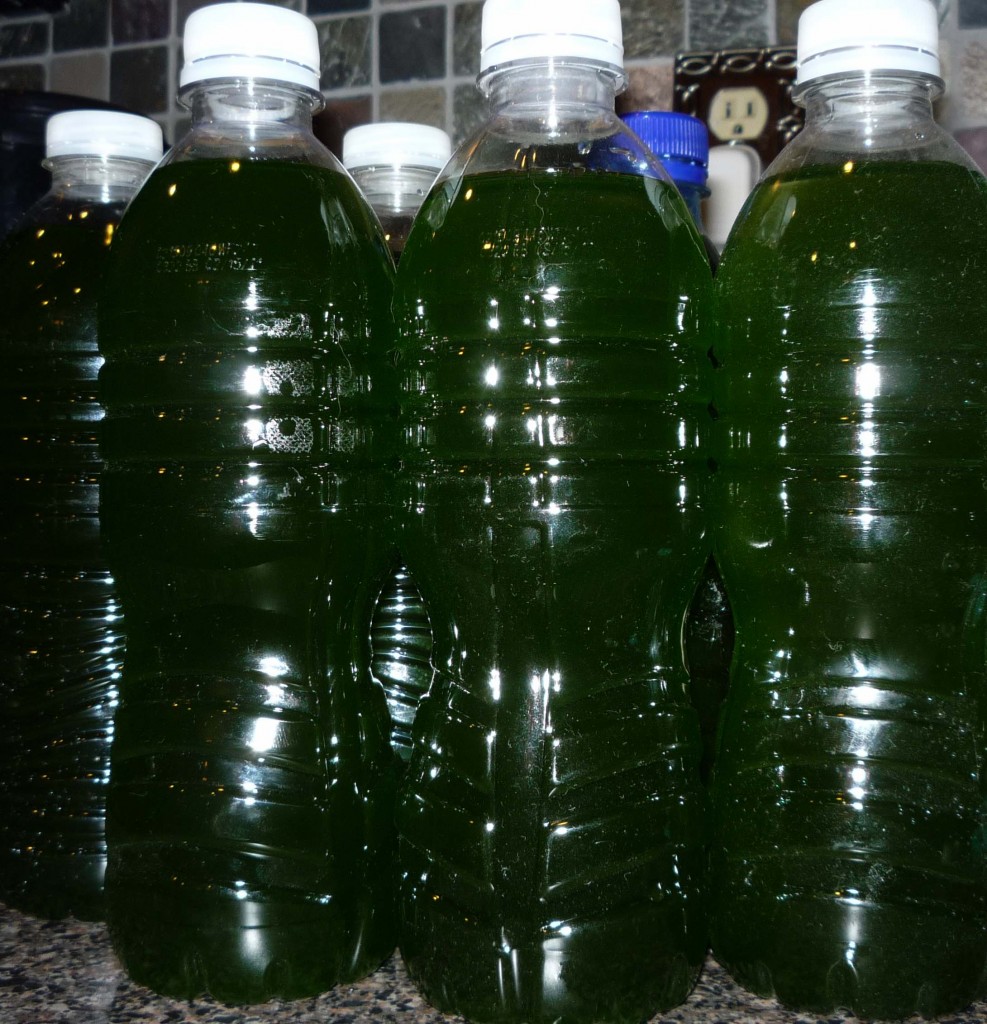Phytoplankton are small photosynthetic organisms considered to be one of the building blocks at the base of the coral reef food chain. Many filter-feeding invertebrates depend on phytoplankton as a significant source of nourishment.
Within the saltwater reef tank, however, phytoplankton are generally not present in abundant numbers. As a result, advanced aquarists often dose this valuable living food source to boost the growth of their invertebrates. Clams (and other bivalves), soft corals, sponges, zooplankton and copepods are all known to feed directly on phytoplankton.
Boosting the growth of beneficial zooplankton and copepods provides a secondary nutritional food source for your reef inhabitants. Typically, phytoplankton is dosed either directly or indirectly into a saltwater reef tank.

Indirect Dosing
When indirect dosing, the phytoplankton are added to the water column, non-discriminately.
In this fashion, the phytoplankton are circulated throughout the tank by the current inside the tank. Re-circulating pumps and power heads propel the phytoplankton through the water column, where they are dispersed throughout the tank and consumed by your tanks’ inhabitants. This method provides an equal (diluted) opportunity to all the filter-feeding tank inhabitants.
The advantage here is the potential for nutritional supplementation to boost copepod, zooplankton and fan worm populations as well as coral and clams at the same time. The disadvantage is that only a relatively diluted concentration reaches all inhabitants.
Direct Dosing
In the direct dosing method, a concentrated cloud of phytoplankton is aimed in the direction of specific filter-feeding invertebrates. If, for example, there is a large filter-feeding clam (Tridacna species), some hobbyists prefer to feed the clam directly, rather than dose indirectly.
In order to direct dose your phytoplankton, you might want to invest in the Sea Squirt or Julian’s Thing.
Both of these tools will make it easy for you to reach your corals easily.
The advantage of direct dosing is that a targeted concentration of food is directed towards the subject invertebrate—maximizing the potential nutritional benefit to that specimen. The downside of this method is that copepods, zooplankton and other filter feeders in your tank may not benefit as much.
There is no right or wrong way to dose phytoplankton—it really is a trade-off decision you need to make, based on your personal dosing objective. If one specific method doesn’t seem more appropriate than the other, consider alternating between both methods. That way, you can only be half wrong.

Saltwater Aquarium Blog Tip:
In order to keep the nutritional value of your phytoplankton supplement at it’s highest, you need to keep two things in mind—
1) You MUST keep the culture refrigerated at all times—do not allow the culture to warm up to room temperature. While the cultures are typically grown at room temperature, the conditions are much different than what is in your supply bottle.
Phytoplankton are grown in less dense concentrations (up until harvest), in larger water volumes, with vigorous aeration and nutritional supplementation. Left out at room temperature, the metabolism of the cells quickly speeds up, consuming the remaining oxygen and increasing the amount of metabolic waste generated.
Without sufficient gas exchange (oxygen and carbon dioxide) the plankton cells will start to die, fouling the water and causing the culture to crash.
2) The second thing to keep in mind is that under refrigeration and without aeration, the plankton will settle to the bottom of the bottle while in your refrigerator—if the culture settles for too long, it will also spoil—so be sure to shake up the culture every time you use it, and at least once a week, if not dosing more often.
Advanced Aquarists Note
Turning off your protein skimmer for a short period of time during and after dosing will allow your filter feeders to more efficiently feed—as it is likely that some of what you dose will be taken up and exported by the skimmer—however only do this if you can remember to turn the skimmer back on afterward….you’ll do more harm than good if you forget to plug your skimmer back in.
For some scientific/technical information about the value of dosing live phytoplankton, check out the following links:
Phytoplankton feeding trials
Clam grow best with fresh phytoplankton cultures



Leave a Reply